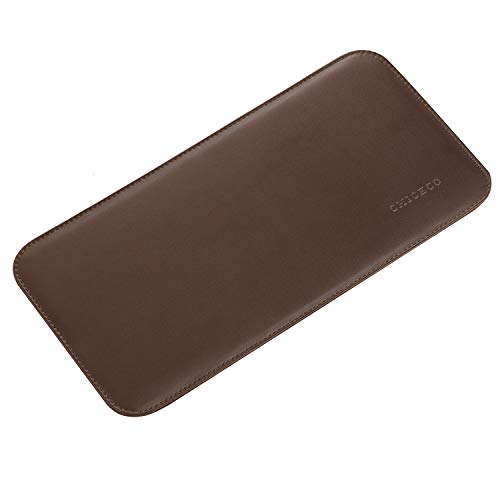You’ve finally splurged on that gorgeous handbag you’ve been eyeing for months, and you want it to look as stunning as the day you brought it home. But as time goes by, you notice it’s starting to slouch and lose its shape. Sound familiar?

Don’t worry, you’re not alone. Keeping your handbag in tip-top form can be a challenge, but it’s definitely not impossible. With a few simple tricks and a bit of care, you can ensure your favorite accessory stays pristine and structured, ready to turn heads wherever you go.
Understanding the Importance of Maintaining Handbag Shape
A handbag isn’t just a container for your essentials; it’s a critical component of your style statement. Maintaining its shape is therefore pivotal. Handbags that sag or lose form can detract from your look, signaling neglect or a lack of style awareness. Moreover, a well-kept bag suggests organization and attentiveness to detail, traits that are often positively correlated with professionalism and reliability.
Think of your handbag as an investment. Just as you wouldn’t let your stocks plummet without intervention, you shouldn’t allow your handbag to deteriorate. A misshapen bag isn’t only aesthetically displeasing but might also compromise the overall integrity of its design, leading to faster wear and tear. In the long run, preserving your handbag’s structure can save you money, since you won’t have to replace it as frequently.
The materials of your bag play a crucial role in its longevity. Leather, for instance, requires more attentive care to prevent warping, while synthetic materials might demand less fuss yet still need proper storage to avoid deformities. Each material has its specific maintenance needs to ensure it holds its shape over time.
How you store your handbag when not in use is just as important as how you handle it daily. Poor storage can result in unnecessary stress on the material, which can lead to a distorted shape. Always store your handbag properly to prevent this. Empty it of heavy items, fill it with a soft stuffing like acid-free tissue paper, and make sure it’s resting on a flat surface or properly hung.
Remember, a handbag that retains its shape is more than just a functional accessory; it’s an embodiment of personal aesthetics and care. Carry your belongings with pride, knowing that the silhouette of your handbag is an extension of your personal brand.
Choosing the Right Handbag Materials
When you’re on the hunt for a new handbag, the material is a crucial factor. Durability and shape retention are key. Different materials respond to stress differently; some keep their form while others may sag or stretch over time.
Leather, a popular choice, is renowned for its long lifespan and ability to maintain shape. But not all leather is created equal. Full-grain leather tops the durability chart—this premium material can withstand daily wear and tear better than others. However, it often comes with a higher price tag.
If full-grain leather isn’t in your budget, consider top-grain leather. It’s slightly less durable but still maintains the bag’s shape well. For a cruelty-free option, vegan leather has made significant strides in quality and can be a good alternative, but check the material for structure and resilience.
Canvas handbags are lightweight and versatile. They might lose shape over time but are generally strong. Incorporate them for casual use but be aware, they might need more upkeep to keep them looking sharp.
Nylon and polyester bags are tough and can resist water and stains, making them great for adverse weather conditions or demanding conditions. They can sometimes look more casual or sporty, so consider your style and where you’ll be taking your handbag.
Remember that lining also matters. A handbag with sturdy lining can better preserve its shape, so check the inside as well as the outside. Stiff linings help, but they shouldn’t compromise the overall feel and comfort of the bag.
Be sure to feel the materials, test their sturdiness, and examine stitching and construction before you commit. The right combination of materials can make all the difference in how your handbag stands the test of time and use.
Proper Storage to Preserve Shape
Proper storage is crucial for maintaining your handbag’s shape over time. When not in use, empty your handbag of any contents that may distort its form. Stuff it with soft materials like bubble wrap, acid-free tissue paper, or a handbag shaper to maintain its original silhouette. Avoid using newspaper as it can transfer ink onto the interior lining.
Optimal Environment
Store your handbag in a:
- Cool
- Dry
- Well-ventilated area
Exposure to direct sunlight or high humidity can damage the material and alter the bag’s shape. A closet shelf is ideal, but ensure there’s sufficient space to prevent the sides from being squished.
The Right Support
For structured handbags:
- Use a purse stand
- Hang from a sturdy hook with a wide, padded clamp
However, be wary of hanging leather bags for long periods, as this can cause stretching.
Dust Bags and Boxes
« How to Store Handbags: Avoid Damage and Keep Your Bags Pristine
Why Is My Handbag Peeling? Uncover the Secrets to Long-Lasting Purses »
Protect your handbag from dust and dirt by using a dust bag. If possible, use the original dust bag that came with it. Alternatively, a soft, breathable fabric bag will do. If you’re using a box, it should be:
- Large enough to fit the handbag comfortably
- Free of acids and chemicals
Regularly air out the bag to prevent mold and mildew buildup.
Practical Tips for Everyday Storage
When you’re back home, don’t just toss your handbag anywhere. Designate a spot, like a special hook or shelf, where you regularly place it. This small habit ensures that you don’t leave your bag in positions that could deform it over time.
Remember, your handbag’s material and structure demand different storage solutions. Always tailor your approach to the specific needs of your handbag to keep it looking impeccable for years to come.
Using Internal Support Accessories
Sometimes, your handbag needs a little more help to stay in perfect shape. Internal support accessories can be game-changers. You’ll find a variety of shapers and inserts specifically designed to maintain the form of your handbag.
Handbag shapers are tailored to fit the bottom of your bag. They prevent sagging and help distribute weight evenly. Not only do they maintain the structure, but these shapers also make your handbag more functional by keeping it upright. You’ll appreciate the difference they make every time you set your bag down.
Inserts, on the other hand, provide overall support. They come in various sizes and materials to match your handbag’s interior. With inserts, you’re preventing the sides and corners of your bag from collapsing. Plus, you’re adding an extra layer of protection for the handbag’s lining against potential stains from accidental spills.
For designer bags with soft leathers and fabrics, consider using specialized pillow inserts. These plush accessories cushion your bag from the inside, simulating the effect of being filled without the weight. You’ll maintain the handbag’s shape without stressing the material.
When shopping for these accessories, remember to:
- Measure your handbag to get the right size accessory.
- Choose quality materials that won’t harm your bag’s interior.
- Consider detachable options for versatility and easy cleaning.
It’s worth investing in these small but effective tools to safeguard the signature look and longevity of your prized handbag. With proper use, internal support accessories will ensure that your handbag stays flawless, whether it’s on display or in your closet waiting for its next outing.
Regular Cleaning and Maintenance
Maintaining the shape of your handbag isn’t just about using the right internal support; regular cleaning and upkeep play a crucial role too. Like any cherished item, handbags require attention to detail and a gentle touch. You’ll be surprised at how simple practices can extend their life and preserve their structure.
Regular dusting is your first line of defense. A soft-bristled brush can dislodge surface dirt without damaging the material. Be sure to get into all the crevices where dust and debris tend to accumulate. For leather handbags, a clean, damp cloth is often sufficient for a quick wipe-down. Skip the household cleaners; opt for products formulated specifically for handbag materials.
- Monthly Conditioning: Leather bags benefit immensely from conditioning. Use a quality leather conditioner to prevent drying and cracking, which keeps your bag pliable and less prone to losing its shape.
- Fabric Protector: For cloth handbags, a fabric protector spray is a lifesaver. It repels stains and water, minimizing damage and helping the bag to maintain its original form.
Address spills and stains immediately. The longer a spill sits, the more likely it will set and distort the fabric or leather. Blot, don’t rub, and certainly avoid harsh scrubbing. For persistent stains, professional cleaners are your best bet; they have the right tools and expertise to tackle the problem without causing harm.
Storing your handbag properly is just as important as its routine clean-ups. When not in use, empty it out to avoid unnecessary stress on the structure. If you’re storing it long-term, consider stuffing it with acid-free tissue paper to help maintain its shape. A breathable dust bag is ideal for protection, keeping moisture and dirt at bay while avoiding the buildup of mold or mildew.
Remember, a well-kept handbag is more than a fashion statement—it’s a reflection of how you value and care for your possessions. A little effort in maintenance goes a long way in keeping that cherished accessory looking its best for years to come.
Conclusion
Taking care of your handbag is a simple yet essential part of your routine that reflects your attention to detail and appreciation for your belongings. With the right care, your favorite accessory will maintain its shape and continue to complement your style for years to come. Remember, a little effort goes a long way in preserving the beauty and functionality of your handbag. So go ahead, give your handbag the love it deserves, and it’ll surely return the favor.
Frequently Asked Questions
What’s the best way to dust a handbag?
For dusting a handbag, use a soft-bristled brush, gently sweeping off any debris to avoid scratching the surface.
Can I use a damp cloth on a leather handbag?
Yes, a clean, damp cloth can be used to wipe down a leather handbag, but avoid over-wetting and ensure to dry it properly afterward.
Should I use a leather conditioner on my handbag?
Using a leather conditioner is recommended to prevent your handbag from drying out and cracking, which will maintain the leather’s suppleness.
Is a fabric protector spray necessary for cloth handbags?
Applying a fabric protector spray is advisable for cloth handbags to shield them from stains and extend their lifespan.
What immediate action should I take if my handbag gets stained?
In case of a spill or stain, you should address it immediately by gently blotting the area with a clean, absorbent cloth and following proper cleaning instructions for the material.
How should I store my handbag when not in use?
Store your handbag in an upright position, in a dust bag, or a pillowcase in a cool, dry place away from direct sunlight to maintain its shape and prevent damage.










